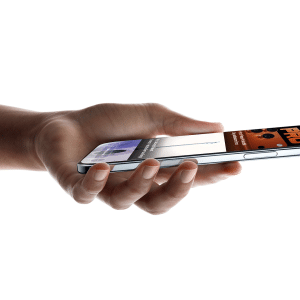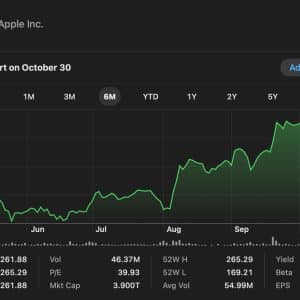Apple’s latest update for visionOS, version 2.2, has arrived in beta, bringing a much-anticipated feature for Vision Pro users: wide and ultrawide display options when using the Vision Pro as an external display for a Mac. This update significantly enhances productivity, providing the flexibility and virtual space of multiple monitors—all within the Vision Pro. Here’s an in-depth look at what this update brings to the table, how it transforms the Vision Pro experience, and what Mac users can look forward to when the official release arrives.
The New Display Options: Standard, Wide, and Ultrawide Modes
Previously, Vision Pro users were limited to a standard virtual display when linking the headset to a Mac. Now, with visionOS 2.2, users have three distinct display modes:
- Standard: The traditional virtual display layout, familiar to early Vision Pro users.
- Wide Display: This setting introduces more screen real estate, allowing users to comfortably use up to four apps simultaneously without compromising on window size.
- Ultrawide Display: For users who need even more space, the ultrawide mode provides a virtual environment comparable to dual 4K monitors side-by-side.
The wide and ultrawide displays offer nearly endless workspace, turning the Vision Pro into an ultimate multitasking machine. This opens up new ways to organize windows, increase productivity, and maximize your workflow.
Why Wide and Ultrawide Displays Matter for Productivity
One of the biggest appeals of wide and ultrawide displays is the freedom to work with multiple applications and documents at once, without the need to toggle between screens constantly. On the Vision Pro, the wide display allows up to four open windows in a comfortably viewable size, whereas the ultrawide display takes multitasking to the next level.
For users accustomed to multi-monitor setups, this experience will feel familiar. The virtual display space offered by the Vision Pro’s ultrawide mode effectively mimics the benefits of a dual-monitor setup, allowing seamless transitions between tasks. With this new screen space, it’s easier than ever to keep reference material, communication apps, and project work in view at all times, ultimately enhancing productivity.
Enhanced Clarity and Audio: Improvements Beyond Screen Space
In addition to offering larger display options, Apple has refined the quality of the virtual screens in visionOS 2.2. The displays now boast higher resolutions and crisper visuals, making reading text, reviewing documents, and editing media feel more natural and lifelike. Improved display sharpness ensures that users can comfortably work for longer periods without straining their eyes.
Moreover, Apple has upgraded audio functionality in this update. Instead of audio coming through the Mac, sound now plays directly from the Vision Pro, delivering a richer, more immersive experience. This enhancement could benefit tasks such as video editing or media playback, where audio clarity is crucial.
Integrating visionOS Apps for an Expanded Workspace
Another advantage of the new wide and ultrawide display options is the ability to integrate visionOS apps alongside Mac applications. Users can surround themselves with both Mac and visionOS apps, fully utilizing the available virtual space around them. For instance, a user might place essential tools like email or calendar apps in the peripheral vision, keeping primary work applications front and center.
This feature opens up possibilities for creative professionals, developers, and designers who often require multiple applications for brainstorming, project tracking, and collaboration. visionOS apps designed for the Vision Pro could provide contextual tools and additional information displays, enabling users to be more efficient without compromising their workflow.
A Closer Look at Specific Use Cases for Different Professionals
1. Creative Professionals
For graphic designers, video editors, and animators, the Vision Pro’s ultrawide display is a dream come true. With the ability to view source material, editing software, and reference tools simultaneously, creatives can streamline their work processes. Visual clarity enhancements are also beneficial when working with high-resolution media, providing sharpness that is crucial when editing fine details.
2. Developers and Programmers
Developers will appreciate the screen space afforded by the ultrawide layout. Debugging, coding, and referencing documentation become more manageable with the added space. Programmers can have multiple code editors, testing environments, and documentation windows open simultaneously, reducing the time spent switching between tabs and windows.
3. Business Professionals and Analysts
For users who rely on data analysis, spreadsheets, and multiple reporting tools, the ultrawide mode offers a nearly panoramic view of essential data. Business professionals can keep communication tools, live reports, and analytical dashboards in view, making it easier to make data-driven decisions in real time. Additionally, the enhanced clarity ensures that detailed information remains easy to read, minimizing errors.
The Future of Mac Virtual Workspaces: What’s Next?
With visionOS 2.2, Apple is gradually pushing the boundaries of what virtual workspaces can offer. These new display modes bring the Vision Pro a step closer to replacing traditional monitor setups, positioning it as a powerful tool for professionals across various fields. While still in beta, this update hints at Apple’s commitment to creating a virtual workspace that feels as natural as a physical one.
Known Limitations and Potential Improvements
Despite the new features, there are a few limitations to be aware of. Currently, Mac users can only work with one Mac window when mirroring the display to the Vision Pro. While the wide and ultrawide modes offer ample workspace, mirroring limitations could restrict users who rely on multiple displays for certain tasks. Expanding functionality in future updates, such as allowing more flexibility in mirroring setups, could further enhance the Vision Pro’s utility.
Another area for improvement could be better integration with Apple’s ecosystem. Although visionOS 2.2 allows for a powerful Mac-Vision Pro connection, users who switch between multiple Apple devices—like iPads or iPhones—might benefit from additional cross-device functionality. The potential for seamless transitions between all Apple devices within the Vision Pro could streamline workflows for users with complex, multi-device setups.
Release Timeline and Compatibility with macOS and iOS Updates
Currently, visionOS 2.2 is available in beta to developers, allowing early testing and feedback. The official release is expected in early December, alongside macOS Sequoia 15.2 and iOS 18.2, ensuring compatibility across Apple’s ecosystem. This coordinated release allows Vision Pro users to experience a fully optimized and synchronized workflow across devices, providing a more seamless experience than ever before.











